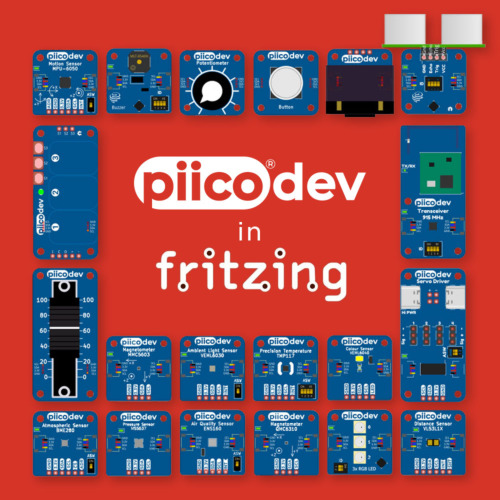Adafruit USB Type C Power Delivery Dummy Breakout - I2C or Fixed - HUSB238
Available with a lead time
Expect dispatch between Jan 16 and Jan 21
Quantity Discounts:
- 10+ $9.17 (exc GST)
- 50+ $8.98 (exc GST)
The HUSB238 USB PD sink chip is neat in that you can either use jumpers (really, resistor selection) to set the desired PD voltage and current or you can use I2C for dynamic querying and setting. Adafruit have build a nice Adafruit USB Type C Power Delivery Dummy Breakout board around the HUSB238 to make it very easy to configure and integrate without having to solder any tiny resistors.
It's perfect for use with USB Type C wall adapters that can provide multiple voltages, the standard offerings are 5V, 9V, 12V, 15V, 18V and 20V. This HUSB238 breakout plugs into the USB C cable and then over the CC lines will negotiate the PD request and commands. For example Adafruit can ask what voltages are available and then pick the highest one. Or if you need a specific voltage it will specifically select that one.
This breakout will be handy for projects where you need a lot more than 5V @ 2A power: this adapter can give up to 20V at 5A - yes you can get 100W over USB C! - and you could buck that down to get a ton of current at 5V or 12V if that's needed. Or use it to convert a DC or battery-powered device into a USB C powered one!
Jumper-configured usage is simple: by default its hard-wired for 5V 1A output since that's what USB C will always provide at first. Cut the 5V jumper and solder closed the 9V, 12V, 15V, 18V or 20V jumper to select the resistor that sets the voltage. You can also select the desired current from 2A to 3A, although Adafruit have found that this isn't as essential, you could always just pull as much as the adapter will provide. No microcontroller or microcomputer is required!
I2C-configured usage is a little more challenging. Since the Vout can be as high as 20V Adafruit don't have an onboard voltage regulator or pullup resistors. Connect to a microcontroller or microcomputer board that has a separate power supply (or that can regulate from up-to-20V if you plan on selecting that high) and I2C pullup resistors to your desired logic level. Then use the Arduino library and example code to query the USB Type C PD source for available voltages and currents and select the desired voltage dynamically. When configuring over I2C, the jumper settings are used on startup until the I2C commands come over.
Comes with a small bit of header and a terminal block so you can decide whether you want to use it in a breadboard, or free-wired.
Technical Details
Product Dimensions: 24.5mm x 20.2mm x 4.9mm / 1.0" x 0.8" x 0.2"
Product Weight: 2.2g / 0.1oz
Exact shipping can be calculated on the view cart page (no login required).
Products that weigh more than 0.5 KG may cost more than what's shown (for example, test equipment, machines, >500mL liquids, etc).
We deliver Australia-wide with these options (depends on the final destination - you can get a quote on the view cart page):
- $3+ for Stamped Mail (typically 10+ business days, not tracked, only available on selected small items)
- $7+ for Standard Post (typically 6+ business days, tracked)
- $11+ for Express Post (typically 2+ business days, tracked)
- Pickup - Free! Only available to customers who live in the Newcastle region (must order online and only pickup after we email to notify you the order is ready). Orders placed after 2PM may not be ready until the following business day.
Non-metro addresses in WA, NT, SA & TAS can take 2+ days in addition to the above information.
Some batteries (such as LiPo) can't be shipped by Air. During checkout, Express Post and International Methods will not be an option if you have that type of battery in your shopping cart.
International Orders - the following rates are for New Zealand and will vary for other countries:
- $12+ for Pack and Track (3+ days, tracked)
- $16+ for Express International (2-5 days, tracked)
If you order lots of gear, the postage amount will increase based on the weight of your order.
Our physical address (here's a PDF which includes other key business details):
40 Aruma Place
Cardiff
NSW, 2285
Australia
Take a look at our customer service page if you have other questions such as "do we do purchase orders" (yes!) or "are prices GST inclusive" (yes they are!). We're here to help - get in touch with us to talk shop.
Have a product question? We're here to help!
Guides
The Maker Revolution
Projects
Pico-Dog Motion Activated Audio Alarm
WaveJumper: Music Sample Slicer on a Breadboard
PiicoDev Ecosystem In Fritzing
Makers love reviews as much as you do, please follow this link to review the products you have purchased.

















Product Comments